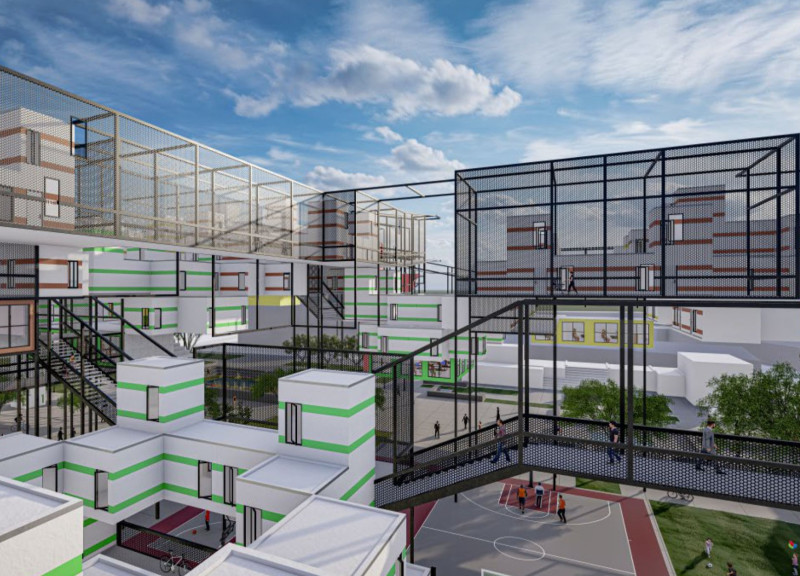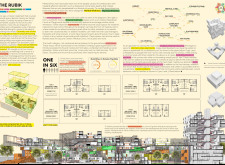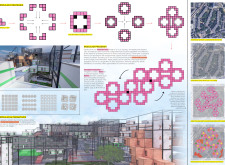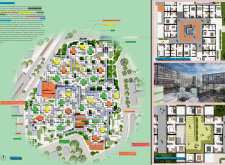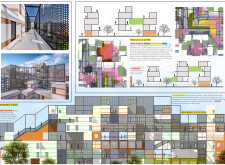5 key facts about this project
The Rubik is a social housing project that addresses the needs of low-income residents in an urban area facing many challenges. With a focus on creating a supportive environment, the design integrates communal spaces and individual living units to enhance both personal and community well-being. By emphasizing collaboration and connection, the project aims to change how residents interact with their surroundings and each other.
Conceptual Framework
The design is built around three essential categories: Mental Wellness, Physical Wellness, and Community Gathering. Each element is carefully integrated to create an environment that supports both individual and collective needs. This holistic approach helps tackle common social barriers, encouraging residents to engage with one another while improving their overall quality of life.
Spatial Organization
The residential units use a modular design to make the best use of space. Dormitory-style apartments allow single residents to share common areas while still having their own private rooms for rest. This design not only maximizes capacity but also promotes a sense of community among those living together.
Community Amenities
Communal spaces are a key feature of the Rubik. Outdoor areas, such as basketball courts and playgrounds, act as social hubs where residents can interact and build relationships. Additionally, communal kitchens and educational spaces enable workshops for skill building and personal growth. These amenities create opportunities for sharing knowledge and experiences, enriching the lives of residents.
Safety and Engagement
Safety is a primary concern within the design. Open courtyards enhance visibility and promote community interaction, making residents feel secure. Retail spaces at ground level also play an important role in the project. These spaces encourage local business and provide job opportunities for residents, helping to strengthen community ties.
The Rubik illustrates a modern approach to social housing, where living spaces are designed not only for residents' individual needs but also for the community's collective well-being. Thoughtful arrangements create an atmosphere that fosters connection, belonging, and personal development.


